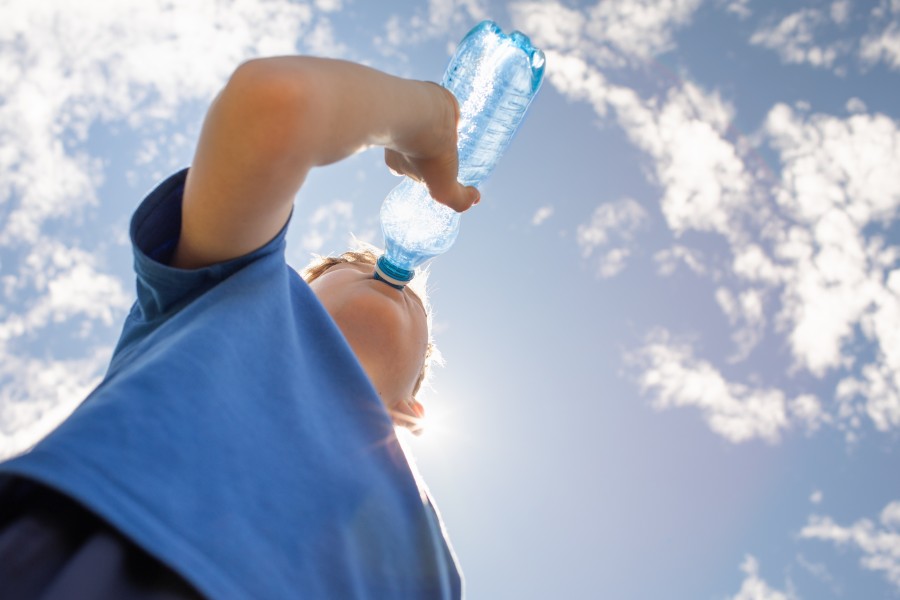How does the environment affect your blood glucose levels?

How does the environment affect your blood glucose levels?
Did you know that the environment can affect your blood glucose levels?
This guide explains how your surroundings – from altitude to temperature – can influence your diabetes and cause blood glucose levels to fluctuate.1 It also offers valuable tips to help you manage these fluctuations effectively.
How altitude affects blood glucose levels
High altitudes can cause changes in your blood glucose levels.1,2
Sometimes, high altitudes may lower your blood glucose levels, raising the risk of hypoglycaemia, or low blood glucose.2,3 This can happen because carbohydrates tend to be absorbed more slowly at high altitudes.2,4 Also, we usually engage in physical activities such as trekking and hiking to get to such heights, which can raise the risk of hypoglycaemia further.2–4
In other cases, high altitude can cause hyperglycaemia, or high blood glucose.2,4 This may occur due to changes in how your cells respond to insulin.4
If you experience altitude sickness or mountain sickness, your body may produce certain hormones in response, which can raise your blood glucose and cause you to need more insulin.2
This is complicated by the fact that the symptoms of mountain sickness can look identical to those of hypoglycaemia.2 So, in some cases, you may be tempted to think you’re having low blood glucose when in fact, your blood glucose may be too high.2
Tips for hiking with diabetes
If you’re into hiking, trekking or climbing, follow these tips to avoid blood glucose changes and ensure your activity goes smoothly:1,2,5,6
- Before your trip, consult your healthcare team about any potential adjustments you may need to make to your basal insulin rate or treatment plan.
- Monitor your blood glucose more regularly when you’re out hiking
- Take plenty of snacks and drinks with you on your trip
- Try to avoid going on a hike alone, but if you do, let people know where you are and keep in touch with them as often as possible - consider sharing your location from your smartphone if you have the ability.
- Let your fellow trekkers know you have diabetes and what to do in case of an emergency
- Wear a hat and sunscreen (with a minimum SPF 30) if you’re out in the sun and stay hydrated. Keep your diabetes tech out of direct sunlight and high temperatures too.
Diabetes and temperature
Both hot and cold temperatures can have a significant impact on blood glucose levels and the risk of diabetes-related complications.7,8 This is because cold and heat can stress the body, and blood glucose levels spike or drop as the body tries to adapt to these stressors.7
People with diabetes may also find it more difficult to respond and adapt to extreme temperatures.7
Diabetes and heat

Diabetes and heat
Heat can affect diabetes in several ways. Firstly, hot temperatures can lead to spikes in blood glucose levels due to slower blood flow to the kidneys, which happens when you’re dehydrated.6
Exposure to heat can also make your body secrete hormones like adrenaline and cortisol, which work against the actions of insulin and raise blood glucose levels.9
Additionally, when it’s hot outside, your blood vessels expand, which causes insulin to be absorbed faster.6,9 As a result, people living with type 1 (and type 2) diabetes may be at a higher risk of hypoglycaemia in the summer.6,7,9
Type 1 diabetes also interferes with how the body typically responds to heat. For people with type 1 diabetes, getting rid of extra heat through sweating and blood vessel dilation can be harder, as is maintaining a stable core temperature.7,10,11 Consequently, having type 1 diabetes may raise your risk of heatstroke and other heat-related illnesses, particularly if you exercise in hot weather.10,11
How to manage diabetes in the summer
To make sure you stay cool, keep your blood glucose in range and avoid complications in the summer, follow these tips:5,6
- Stay hydrated by drinking plenty of water
- Avoid direct sun and stay in the shade as much as you can
- Test your blood glucose levels regularly
- Plan your exercise in the morning or the evening, when the temperatures are lower, or exercise in a gym with air conditioning5
- Carry extra snacks in case of hypos
- Make sure you keep your insulin away from heat, as extremely high temperatures can make insulin less effective
- Apply sun cream generously and consider wearing a hat
Did you know?
Getting sunburnt can raise your blood glucose levels.5,6 This is because sunburn causes additional, unnecessary stress on your body which can cause blood glucose spikes.6
Diabetes and cold
When you’re living with type 1 diabetes, blood glucose levels tend to fluctuate more in the cold season.8
In addition, type 1 diabetes may lead to poorer blood circulation, which could make you more prone to cold-related illnesses.8 The higher number of cold and flu viruses in the winter may also pose additional challenges.8
How to manage diabetes in winter
Follow these tips to ensure you manage your diabetes well in cold temperatures:8
- Keep your immune system strong and ready to fight off cold viruses by eating well, getting enough sleep, drinking water and exercising
- Consider some vitamin supplements to get you through the winter, but speak to your healthcare team before taking anything new
- Have the flu vaccine to prevent flu-related complications if you can
- Test your blood glucose more regularly and be on the look-out for high ketone levels
High altitudes, extreme temperatures and pollution can all cause glycaemic variations and affect diabetes. Follow the tips highlighted here to help avoid complications and keep your blood glucose within range.
Sources:
- IDF. Diabetes and travelling. Accessed 26 August 2024. Available at: https://idf.org/europe/media/uploads/sites/2/2023/06/AwarenessPaper-DiabetesAndTravelling-21Dec2020_compressed.pdf
- Malcolm G, Rilstone S, Sivasubramaniyam S, et al. Managing diabetes at high altitude: personal experience with support from a Multidisciplinary Physical Activity and Diabetes Clinic. BMJ Open Sport Exerc Med. 2017;3(1):e000238. Published 16 August 2017. https://doi.org/10.1136/bmjsem-2017-000238
- Dugan CW, Maloney SK, Abramoff KJ, et al. Effects of simulated high altitude on blood glucose levels during exercise in individuals with type 1 diabetes. J Clin Endocrinol Metab. 2022;107(5):1375–1382. https://doi.org/10.1210/clinem/dgab881
- Koufakis T, Karras SN, Mustafa OG, et al. The effects of high altitude on glucose homeostasis, metabolic control, and other diabetes-related parameters: From animal studies to real life. High Alt Med Biol. 2019;20(1):1–11. https://doi.org/10.1089/ham.2018.0076
- CDC. Managing diabetes in the heat. Accessed 26 August 2024. Available at: https://www.cdc.gov/diabetes/articles/managing-diabetes-in-the-heat.html
- BreakthroughT1D (formerly JDRF). A guide to summer with T1D. Accessed 26 August 2024. Available at: https://www.breakthrought1d.org/news-and-updates/guide-to-summer-with-type-1-diabetes/
- Kenny GP, Sigal RJ, McGinn R. Body temperature regulation in diabetes. Temperature (Austin). 2016;3(1):119–145. Published 4 January 2016. https://doi.org/10.1080/23328940.2015.1131506
- JDRF. Surviving winter with type 1 diabetes. Accessed 26 August 2024. Available at: https://jdrf.ca/surviving-winter-with-type-1-diabetes/
- Miyamura K, Nawa N, Nishimura H, et al. Association between heat exposure and hospitalization for diabetic ketoacidosis, hyperosmolar hyperglycemic state, and hypoglycemia in Japan. Environ Int. 2022;167:107410. https://doi.org/10.1016/j.envint.2022.107410
- Notley SR, Poirier MP, Yardley JE, et al. Impaired whole-body heat loss in type 1 diabetes during exercise in the heat: A cause for concern? Diabetologia. 2019;62:1087–1089. https://doi.org/10.1007/s00125-019-4858-5/
- Ratter-Rieck JM, Roden M, Herder C. Diabetes and climate change: Current evidence and implications for people with diabetes, clinicians and policy stakeholders. Diabetologia. 2023;66(6):1003–1015. https://doi.org/10.1007/s00125-023-05901-y
- Zhang S, Mwiberi S, Pickford R, et al. Longitudinal associations between ambient air pollution and insulin sensitivity: results from the KORA cohort study. Lancet Planet Health. 2021;5(1):e39–e49. https://doi.org/10.1016/S2542-5196(20)30275-8


